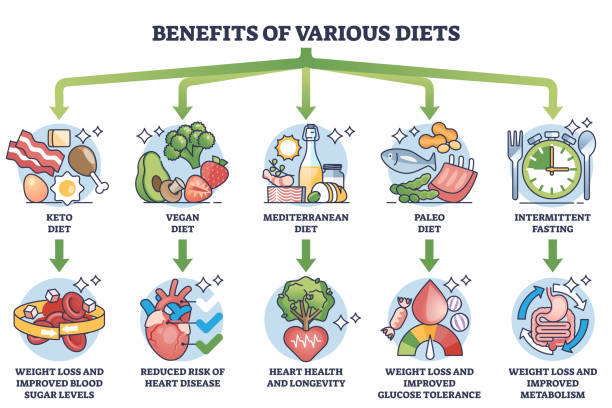Choosing the right diet can be confusing, especially with so many plans out there. Keto, paleo, vegan, and intermittent fasting all promise to help you lose weight, gain energy, and feel healthier. But not every diet works the same for everyone. With all these choices, it can be tough to figure out which one is truly effective, safe, and realistic for long-term use.
As a nutritionist, I’ve guided hundreds of people toward eating plans that match their goals and lifestyles. In this article, I’ll take a closer look at 5 of the most popular diets today. You’ll learn how each one works, what benefits they offer, the possible downsides, and whether they’re a smart choice for your personal health needs.
Let’s take a clear and honest look at each diet, keeping your health and well-being front and center. The goal is to help you make smart, informed choices that truly support your lifestyle.
1. Keto Diet (Ketogenic Diet)
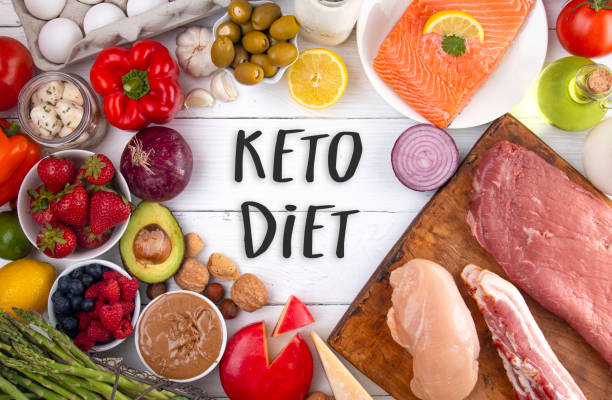
How It Works
The ketogenic diet is all about eating lots of healthy fats, a moderate amount of protein, and cutting carbs to a minimum. This low-carb approach pushes your body into a state called ketosis. In ketosis, your body starts burning fat for fuel instead of relying on carbohydrates for energy.
Typical macros:
- 70–75% fat
- 20–25% protein
- 5–10% carbs
What You Eat
- Fatty meats and fish
- Cheese and eggs
- Nuts, seeds, avocados
- Leafy greens and non-starchy vegetables
- Oils like coconut or olive oil
What You Avoid
- Bread, pasta, rice
- Sugar and sweets
- Most fruits
- Starchy vegetables (like potatoes)
Pros
✅ Fast weight loss
✅ Reduced blood sugar levels
✅ May improve brain function for some people
Cons
❌ Hard to stick to long-term
❌ Can cause “keto flu” at first
❌ Lacks fiber and key nutrients
Nutritionist’s Take
Keto can be helpful for short-term weight loss, especially for people with insulin resistance or blood sugar issues. But it’s not the best choice for everyone. The diet can be hard to maintain over time and may not meet all your nutrient needs. It’s smart to follow keto under the guidance of a doctor or registered dietitian to stay safe and balanced.
🔗 Read more from Harvard Health
2. Mediterranean Diet
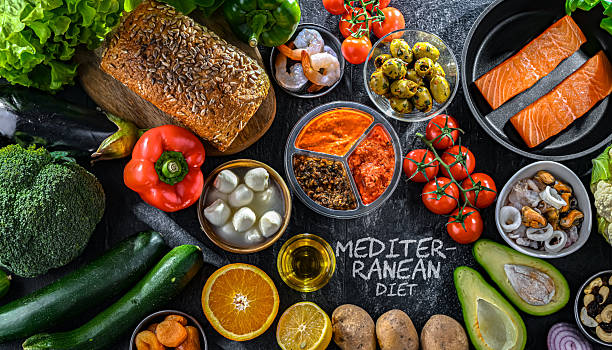
How It Works
The Mediterranean diet is based on the traditional eating habits of people in countries like Greece, Italy, and Spain. It focuses on whole, unprocessed foods and includes heart-healthy fats like olive oil. This way of eating also highlights plant-based meals—rich in fruits, vegetables, beans, nuts, and whole grains—that support overall health and wellness.
What You Eat
- Fruits and vegetables
- Whole grains
- Beans and legumes
- Nuts and seeds
- Olive oil as the main fat
- Moderate fish and poultry
- Occasional red wine
What You Avoid
- Red meat (limit it)
- Refined carbs and processed foods
- Added sugars
Pros
✅ Heart-healthy
✅ Easy to maintain
✅ Packed with nutrients and antioxidants
✅ Backed by research
Cons
❌ May not lead to quick weight loss
❌ Requires home cooking and meal prep
Nutritionist’s Take
The Mediterranean diet is often seen as one of the healthiest ways to eat. Research shows it may help lower the risk of heart disease, type 2 diabetes, and even brain-related conditions like Alzheimer’s. Over time, this balanced, nutrient-rich diet can support both your body and mind.
🔗 More on the Mediterranean Diet from Mayo Clinic
3. Intermittent Fasting (IF)
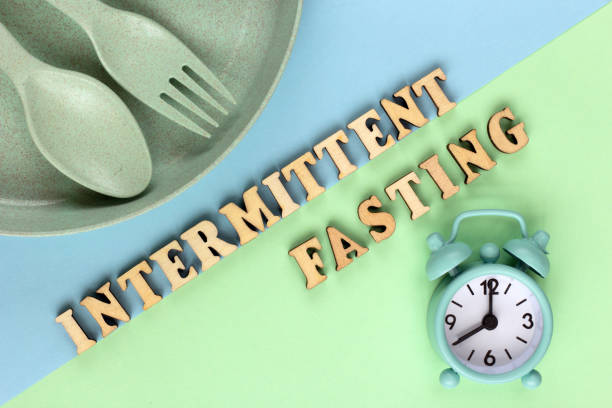
How It Works
Intermittent fasting isn’t a typical diet—it’s a way of eating that follows a set schedule. You cycle between periods of eating and periods of fasting. This pattern helps regulate when you eat, not just what you eat. Some of the most popular methods include:
- 16:8: Fast for 16 hours, eat within 8 hours
- 5:2: Eat normally for 5 days, restrict calories for 2 days
- Eat-stop-eat: 24-hour fast once or twice a week
What You Eat
During your eating window, you’re free to enjoy a variety of foods—but healthy choices still matter. Try to fill your plate with whole foods like fruits, vegetables, lean proteins, and fiber-rich carbs. These support steady energy, better digestion, and help you get the most from intermittent fasting.
What You Avoid
- Eating outside your fasting window
- Sugary snacks and processed foods
Pros
✅ Can help with weight loss
✅ May improve insulin sensitivity
✅ Promotes cell repair (autophagy)
Cons
❌ Not ideal for people with eating disorders
❌ Can cause energy dips or headaches early on
❌ May not suit everyone’s schedule
Nutritionist’s Take
Intermittent fasting is simple and flexible, which makes it easy to fit into many lifestyles. But it’s not a magic solution. It works best when you pair it with balanced, healthy meals during your eating windows. This approach is great for people who want fewer food rules and more freedom in how and when they eat.
🔗 Learn about intermittent fasting from Johns Hopkins Medicine
4. Vegan Diet
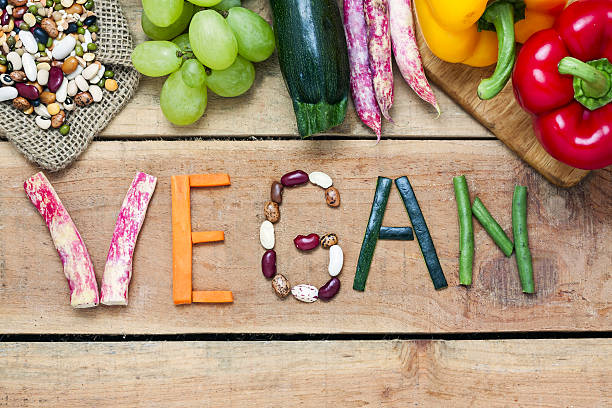
How It Works
The vegan diet removes all animal products from your meals. That means no meat, dairy, eggs, or anything made with animal ingredients. Instead, it’s based on plant-based foods like fruits, vegetables, whole grains, legumes, nuts, and seeds. This diet is often chosen for health, environmental, or ethical reasons.
What You Eat
- Lentils, beans, tofu
- Whole grains like brown rice and oats
- Vegetables and leafy greens
- Fruits
- Plant-based oils and milks
- Nuts and seeds
What You Avoid
- Meat and fish
- Eggs and dairy
- Honey (some vegans avoid this too)
- Animal-derived products (like gelatin)
Pros
✅ May lower risk of heart disease and cancer
✅ Helps with weight loss and digestion
✅ Environmentally friendly
Cons
❌ Risk of vitamin B12, iron, and omega-3 deficiencies
❌ Eating out can be tricky
❌ Requires label reading and meal planning
Nutritionist’s Take
A vegan diet can be very healthy, but it takes good planning. Since it cuts out all animal products, you need to make sure you’re getting enough protein, iron, calcium, and key vitamins like B12. Some people may need to take supplements to meet all their nutrition needs and stay balanced.
5. Paleo Diet (Caveman Diet)
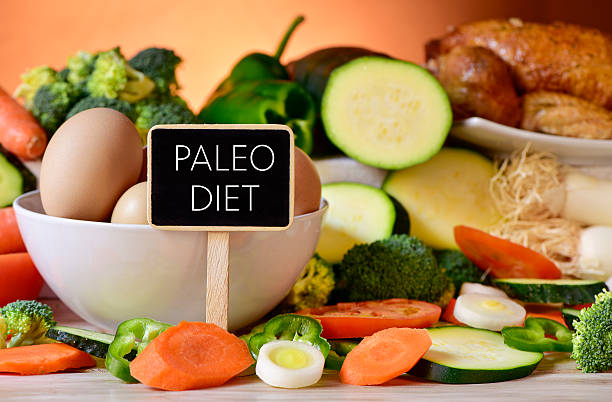
How It Works
The Paleo diet cuts out processed and modern foods, focusing instead on what our early ancestors may have eaten. It’s based on the diet of the Paleolithic era and includes whole foods like meat, fish, vegetables, fruits, nuts, and healthy fats. The goal is to eat in a more natural, unprocessed way that supports overall health.
What You Eat
- Grass-fed meats and wild fish
- Eggs
- Fruits and vegetables
- Nuts and seeds
- Healthy oils (olive, avocado, coconut)
What You Avoid
- Dairy
- Grains (even whole grains)
- Legumes
- Processed foods and sugars
Pros
✅ Whole-food based
✅ High in protein and fiber
✅ May reduce inflammation
Cons
❌ Cuts out healthy food groups like legumes and grains
❌ Can be expensive
❌ May lack calcium and vitamin D
Nutritionist’s Take
The Paleo diet encourages clean eating and helps you avoid processed and junk foods. However, it can feel strict since it cuts out many common foods. If you decide to follow it, try to keep things balanced. Unless you have a food sensitivity, there’s usually no harm in including healthy options like beans or whole grains from time to time.
So, Which Diet Is Best?
The truth is, there’s no single diet that works for everyone. The best eating plan is one that fits your lifestyle, helps you reach your health goals, and is something you can follow long term. Whether you’re trying to lose weight, manage a health condition, or simply feel better each day, the right diet is the one you can enjoy and maintain.
Here’s a quick recap:
| Diet | Best For | Caution |
|---|---|---|
| Keto | Quick fat loss | May cause nutrient gaps |
| Mediterranean | Heart health, long-term wellness | May require cooking effort |
| Intermittent Fasting | Flexible weight loss | Not for everyone |
| Vegan | Ethical and health-conscious eaters | Nutrient deficiencies |
| Paleo | Clean eating | Very restrictive |
Tips Before Starting Any Diet
Here’s something I always share with my clients:
- ✅ Always check with a doctor or registered dietitian before starting any new diet. They can help you choose a plan that’s safe, effective, and right for your health needs.
- ✅ Set goals that are realistic and easy to stick with. Aim for slow, steady progress—it’s safer, more sustainable, and more likely to lead to long-term success.
- ✅ Pay attention to how you feel—not just the number on the scale. Energy levels, mood, sleep, and digestion are all signs of how well a diet is working for you.
- ✅ Listen to your body and pay attention to how it responds. What works well for someone else might not be the right fit for you. Everyone’s needs are different, so choose what makes you feel your best.
Final Thoughts: Make Food Work for You
Picking a diet doesn’t have to be stressful or confusing. Whether you go plant-based, try keto, or follow the Mediterranean lifestyle, the most important thing is finding balance. A good diet should be healthy, realistic, and something you can stick with long term. The best eating plan is one you enjoy and can make part of your daily life.
Ready to find your perfect fit?
Leave a comment below—What diet have you tried? What worked (or didn’t)? Let’s start the conversation!


